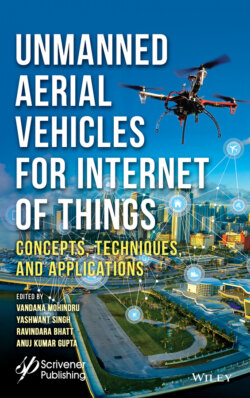Читать книгу Unmanned Aerial Vehicles for Internet of Things (IoT) - Группа авторов - Страница 13
1.1 Introduction
ОглавлениеAn Unmanned Aerial Vehicle or UAV (also known as a drone) is an aircraft without a human pilot on-board and can be piloted remotely or can fly autonomously with predefined paths [1]. UAV is a component of an unmanned aircraft system (UAS) which further includes a remote control station and a system of communication between the two. UAV is a term mostly referenced to be used in military use cases while in civil it is “drone”. A drone is a general term used to refer to the UAVs [2].
UAVs are becoming increasingly famous because of their numerous good applications in various fields and scopes. E.g. Disaster monitoring, assessment and management, aerial mapping, Asset Inspection & Videography, Mapping & Surveying, Aerial Photography, Real estate photography [3], Crop spraying & monitoring, Agriculture, Payload carrying, different applications requiring Multispectral/thermal/NIR cameras, Mining, Search and Rescue, Disaster-zone mapping, Live-streaming events, Marine Rescue, Forensics, Disaster Relief, Emergency Response, Monitoring Poachers, Roof inspections, Firefighting, Product Delivery, Meteorology, Aviation, etc. and with further advancement in technology UAV can survive extreme weather condition which makes them a perfect fit for it [4, 16].
